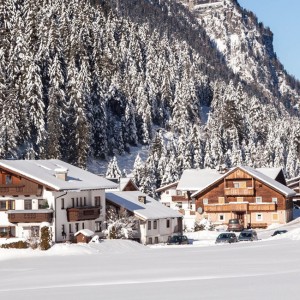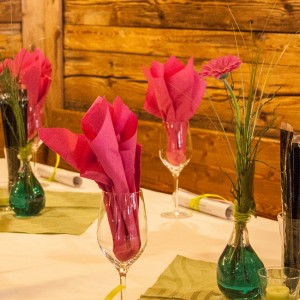Geography
The Pitztal valley is a southern tributary valley of the Inn valley. Near Imst (720 metres above sea level) it breaks into the massif of the Ötztal Alps with a length of approximately forty kilometres. On the western side of the valley, the mountain range of the Kaunergrat rises up forming the border to the Kaunertal valley. On the eastern side, the Geigenkamm mountain ridge divides the Pitztal valley from the Ötztal valley, which runs almost in parallel. The lower course of the Pitze river, which is fed by the Mittelberg- and Taschachferner glaciers cuts deep into the rock forming a gorge. The lower valley with its villages of Arzl, Wenns and Jerzens is wide, sunny and opens towards the Inn valley. Thanks to the rolling hills of the Venet in the west and the Zeigerkamm ridge in the east, agricultural cultivation is possible up to higher altitudes. The valley narrows inward from Jerzens. It continues along the township of St Leonhard and its many hamlets (at 22 km, it is the forth-longest township of Austria) passing more than 40 roaring waterfalls up to Mittelberg (1,740 metres). Here the valley branches off to the Mittelbergtal and the Taschachtal valleys. They lead directly on to the magnificent world of glaciers with the Wildspitze (3,774 metres), the highest mountain of Tyrol, towering above. Apart from the Wildspitze, more than fifty 3,000 metre peaks frame the Pitztal valley.
Fauna and Flora
Pitztal boasts diverse and species-rich flora and fauna. Those who set out to explore will find an impressive variety of vegetation, ranging from the moorland on the Piller mountain saddle to the wetland and glacial worlds. Depending on altitude and terrain, the tree population comprises larch trees, pine varieties and some rare foliage trees (trembling poplar, European rowan). Smaller noteworthy varieties are the mountain juniper and the savin juniper. Besides its economic use, Pitztal’s forests have special importance as a protective forest. Pitztal accommodates a species-rich game population. Apart from roe and red deer and chamois, it is the habitat of a European mouflon colony and of the Alpine ibex, which has been reintroduced since 1953. Mountain cocks, bearded vultures and marmots complete the variety.
Climate
Pitztal is considered as an inner Alpine dry valley because of its relatively low precipitation. This is due to its sheltered location, being surrounded by mountain ranges. The main Alpine mountain ridge acts as a natural barrier against air masses from the South, where the majority of humidity and precipitation is lost.
Infrastructure
The valley offers three hiking and ski resorts and respective mountain railways: Hochzeiger Berbahnen, Rifflsee Bergbahnen and Pitztal Glacier. All three resorts perfectly cater for people of all ages. Get spoilt with local delicacies by Pitztal’s restaurants, inns and catered mountain huts: regional bacon snack platters, sugared pancake with raisins [Kaiserscharrn] and hearty cheese dumplings [Kaspressknödeln] will tickle your taste buds.
Sights
Enjoy the “highest” cappuccino of your life at 3,400 metres above seal level at Café 3.444 on Pitztal Glacier, the highest coffee shop in Austria. The holiday region of Pitztal offers numerous sights that will stay in your memory: its unspoilt nature at Kaunergrat nature park, the magnificent panoramic views of Pitztal’s peaks, its waterfalls, cultural and historical monuments, museums, viewing platforms and longstanding traditional events.








